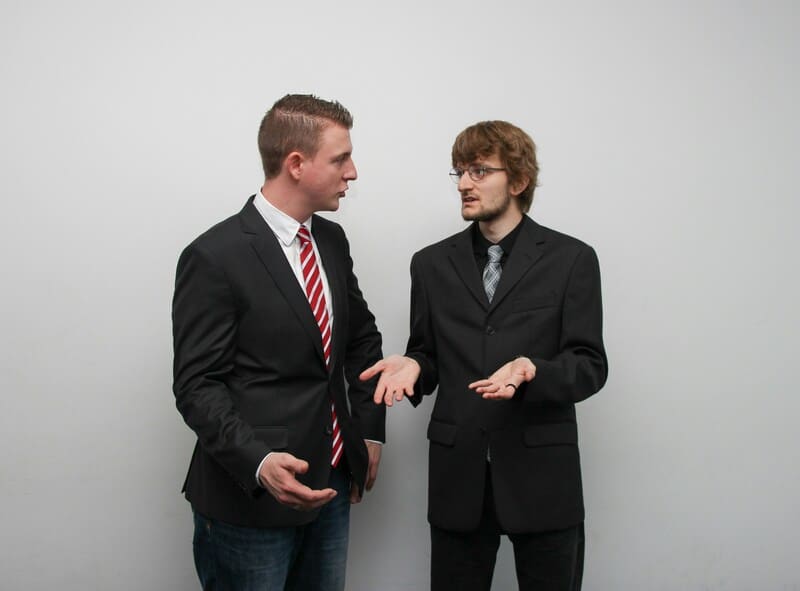A person showing passive-aggressive behavior indirectly expresses their aggression through fake innocuous actions. Typically, they may portray their feelings through stubbornness, sullenness, or procrastination. To avoid confrontation, a passive-aggressive individual may try to control situations more subtly, preferring to let others lead. Ultimately, this passive-aggression allows someone to maintain control over others or situations without blatantly expressing their emotions or intentions.
Signs of Passive Aggression
There are various ways for a person to show passive-aggressive behavior including the silent treatment, ghosting, and giving backhanded compliments. Moreover, someone can show passive-aggressiveness by indirectly refusing requests, evading direct answers, or making excuses.
Likewise, they may respond to others with sarcasm, jokes, or subtle digs to mask their hidden emotions. Additionally, a passive-aggressive person is likely to deny their own feelings, claiming to be fine or that they aren’t mad despite their apparent fury. They engage in this behavior to effectively shut down conversations or to avoid unpleasant discussions on their issues.
Passive-aggressive behavior may include someone showing their frustrations nonverbally by loudly sighing, excessively pouting, or door slamming. Furthermore, they may complain to others to express their discontent or “keep score” over others to express unfair treatment. In relationships, a person shows passive aggression through sarcasm, delays finishing work, or withholding important information from others. This behavior can hinder team progress, especially when they refuse to communicate or collaborate with their coworkers.
Exploring Passive Aggressive Behavior
An individual displaying passive aggression may struggle to make or maintain relationships. Engaging in this behavior causes frustration and confusion for everyone involved as it creates misunderstandings, uncertainty, and unaddressed problems. Over time, this passive-aggressive behavior destroys the relationship due to the partner growing tired and resentful of repeated requests and sarcastic responses.
Since an individual won’t address their underlying frustration or anger, tensions fester within their relationships. Beyond personal relationships, this passive-aggressive behavior can lead to unintended consequences. For instance, an employee can face termination or disciplinary actions, while a student gets poor grades for missing assignments or turning them in late. Moreover, a passive-aggressive individual hinders their own growth and rarely receive positive resolutions to their issues, impacting their ability to maintain good relationships.
Risk Factors

Despite its damaging impact on relationships, it’s surprisingly common for individuals to express passive-aggressive behavior. In fact, this behavior is typically caused by several factors with family upbringing playing the biggest role. Precisely, an individual raised in certain environments that discouraged emotional expression may learn to channel their frustration or anger passively. A person’s mental health may also contribute to the behavior as research suggests depression can cause it due to their attitude, distress response, and attributional style.
Certain situations or circumstances can influence someone’s passive aggression too. Particularly, any place where expressing anger is considered socially unacceptable, including family gatherings or the workplace, can push someone to develop this behavior. A person who fears or is uncomfortable with confrontation may develop passive-aggressive behavior instead of assertiveness. This avoidance mostly stems from a person’s fear or inability to stand up for themselves.
Dealing with Passive-Aggressive Behavior
Recognizing when someone shows passive-aggressive behavior is an important first step to dealing with them effectively. After noticing these signs, stay calm and point out their emotions to them without judgment but do so in a factual manner. Approaching an individual this way avoids placing blame and matching their emotional expression while creating a safe place that encourages openness.
Following this, the individual can properly express themselves, allowing effective communication. Just remember, however, that actively listening and having empathy go a long way to keep peace within relationships even in conflict. And if you’re “Minnesota nice” you might just be passive-aggressive without even knowing it.
Final Thoughts
Recognizing passive-aggressive behavior within oneself may be challenging but it’s highly important to develop healthier habits. Overcoming this behavior requires improving self-awareness by understanding their emotional reactions in various situations or with others to communicate effectively. Ultimately, patience is crucial in altering behavioral patterns or reactions as it can take time and may not be easy for passive-aggressive individuals to accomplish.
Disclaimer: This article is intended simply to provide information. It does not replace the medical advice of a physician or other medical professional. Please speak with your doctor or therapist if you have any questions or concerns.




